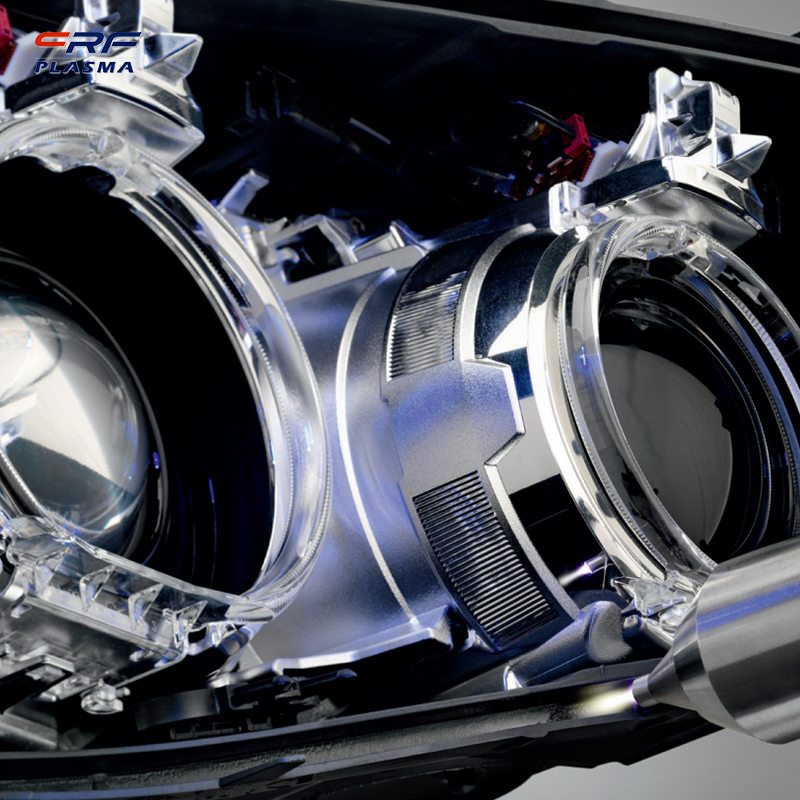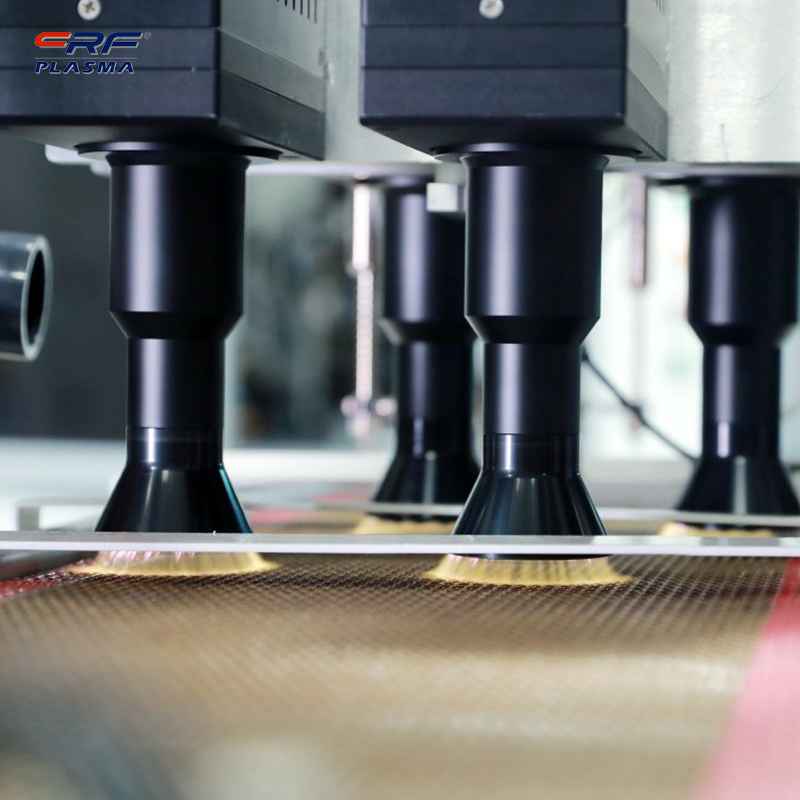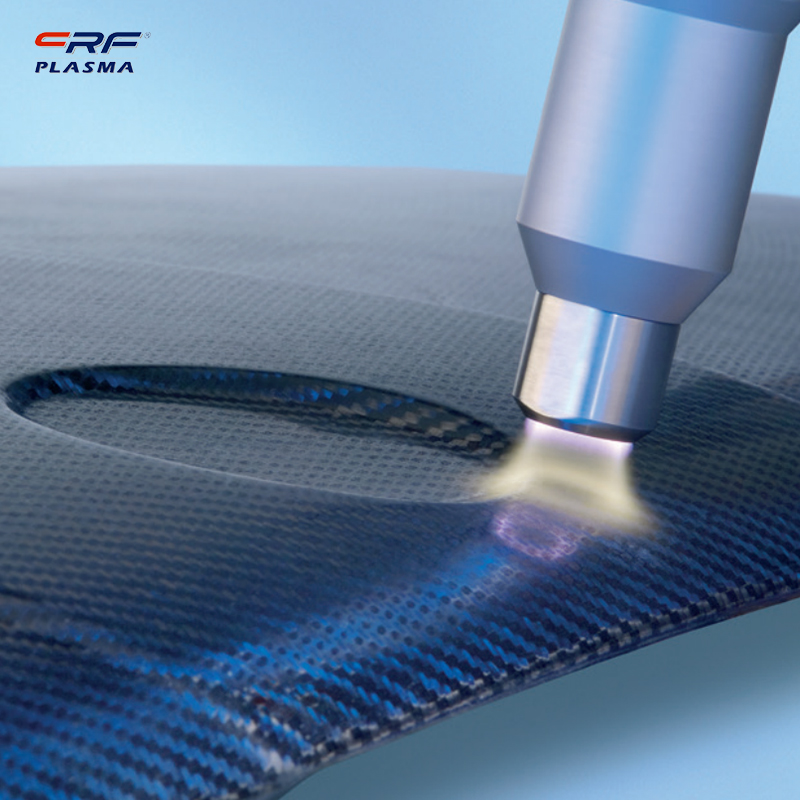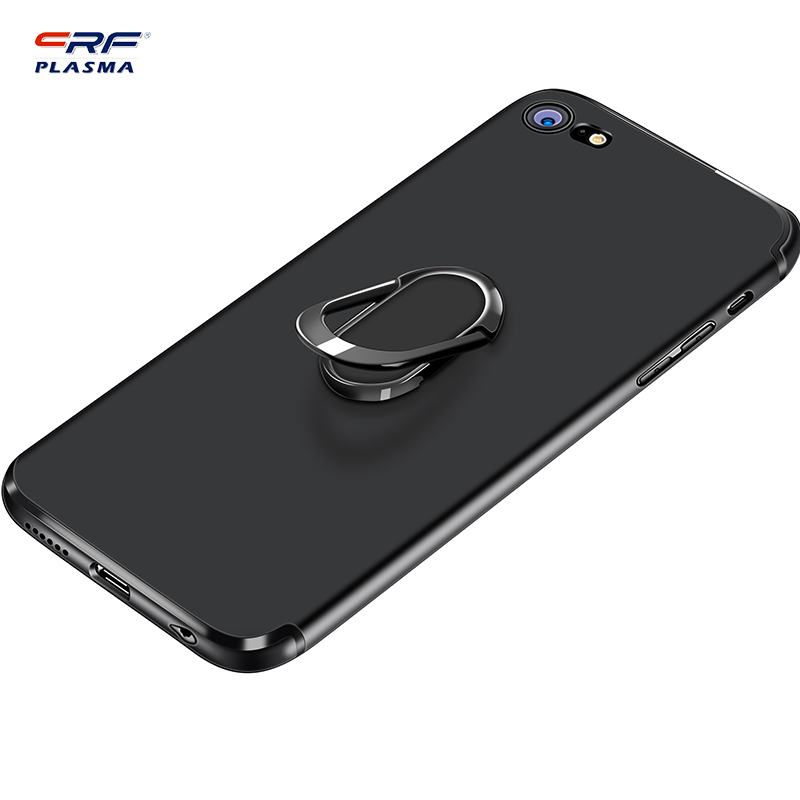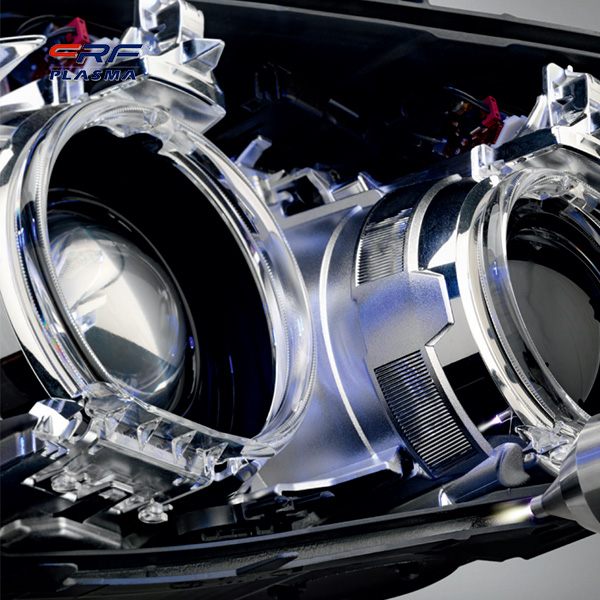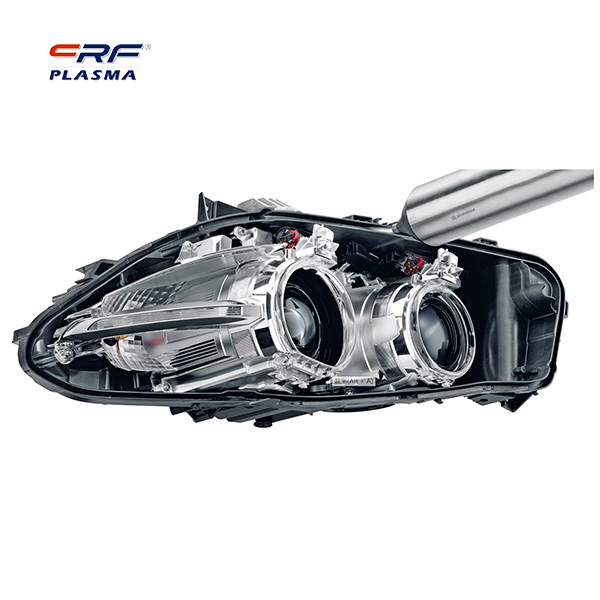
Welcome to Shenzhen Sing Fung Intelligent Manufacturing Co., Ltd.
E-mail:shaobo@sfi-crf.com
Today, I will tell you how the plasma etches the LDPE film.
- Categories:Industry News
- Author:Plasma cleaning machine-CRF plasma plasma equipment-plasma surface treatment machine manufacturer-chengfeng intelligent manufacturing
- Origin:
- Time of issue:2022-08-20
- Views:
(Summary description)Plasma modification mainly has the following advantages: ①It is a dry process, which meets the current needs of energy saving and environmental protection; ②There are no special requirements for the materials to be processed, and it has universal applicability; ③ The processing time is short, only a few seconds to a few minutes; ④ Only modify the surface layer of the material without causing damage to the substrate itself. Therefore, the plasma technology has better application effect than the traditional modification technology. Plasma is a non-condensed system produced by complete or partial ionization of the gaseous state. The so-called "ionization" means that at least one electron is detached from an atom or molecule, thereby converting the atom or molecule into a positively charged ion. The system includes atoms, molecules, ionic excited states and metastable states. The number of positive and negative charges in the system is equal, and the system is macroscopically neutral. The application of plasma technology in material science is particularly significant. The development of new materials is to modify their surfaces through plasma technology in order to achieve higher performance, which is an important means of research and development of new materials. In the process of modifying the material surface by plasma, the original chemical bond on the material surface is broken to form a new chemical bond usually by hitting the material surface. With the exception of ions, most of the ions in the plasma have energies higher than chemical bond energies. This suggests that plasma can break chemical bonds on the surface of materials and form new ones. The surface modification of plasma treatment is to expose the material to the plasma of non-polymeric gas, and bombard the surface of the material with the plasma to change the polymer structure, so as to achieve the purpose of modifying the surface of the polymer material. Plasma treatment is mainly aimed at inert gases. Organic polymer materials are treated with non-polymeric inorganic gases such as oxygen, nitrogen, hydrogen, and argon, and then contact with air, which will introduce functional groups on the surface to form cross-linked structural layers or generate free radicals. In general, the hydrophilicity of the surface is greatly improved after plasma treatment of the surface. The crystallinity and timeliness of PET film after surface modification were studied. After treatment under dielectric barrier discharge conditions, the water contact angle of the film decreases with the increase of energy density, and the biaxially stretched film with the highest crystallinity has the smallest contact angle. The etching effect of air plasma on the LDPE film is the most obvious, so the surface morphology change is the most prominent. Under the best conditions, the peel strength after bonding is significantly increased compared with that before treatment. This is because the active groups generated by air plasma interact with the surface of LDPE to increase active particles and attract oxygen-containing groups. In addition, due to the timeliness of plasma treatment, the next process should be entered immediately after treatment. After the PTFE is treated by plasma jet, the hydrophilic property of the material surface is enhanced. It was found from the SEM pictures that the treated PTFE surface produced dense micron-sized particles, which increased the surface roughness, and the density and roughness of these particles increased with the prolongation of the treatment time. This is because the cleavage of C-F bonds on the surface of PTFE introduces oxygen-containing groups. After the plasma modification treatment, the hydrophilicity and surface roughness of the material surface are greatly improved, and there is a linear increase trend with the working pressure. The increased nitrogen content after plasma treatment improves the biocompatibility of the polycarbonate.
Today, I will tell you how the plasma etches the LDPE film.
(Summary description)Plasma modification mainly has the following advantages:
①It is a dry process, which meets the current needs of energy saving and environmental protection;
②There are no special requirements for the materials to be processed, and it has universal applicability;
③ The processing time is short, only a few seconds to a few minutes;
④ Only modify the surface layer of the material without causing damage to the substrate itself. Therefore, the plasma technology has better application effect than the traditional modification technology. Plasma is a non-condensed system produced by complete or partial ionization of the gaseous state. The so-called "ionization" means that at least one electron is detached from an atom or molecule, thereby converting the atom or molecule into a positively charged ion. The system includes atoms, molecules, ionic excited states and metastable states. The number of positive and negative charges in the system is equal, and the system is macroscopically neutral. The application of plasma technology in material science is particularly significant. The development of new materials is to modify their surfaces through plasma technology in order to achieve higher performance, which is an important means of research and development of new materials. In the process of modifying the material surface by plasma, the original chemical bond on the material surface is broken to form a new chemical bond usually by hitting the material surface. With the exception of ions, most of the ions in the plasma have energies higher than chemical bond energies. This suggests that plasma can break chemical bonds on the surface of materials and form new ones.
The surface modification of plasma treatment is to expose the material to the plasma of non-polymeric gas, and bombard the surface of the material with the plasma to change the polymer structure, so as to achieve the purpose of modifying the surface of the polymer material.
Plasma treatment is mainly aimed at inert gases. Organic polymer materials are treated with non-polymeric inorganic gases such as oxygen, nitrogen, hydrogen, and argon, and then contact with air, which will introduce functional groups on the surface to form cross-linked structural layers or generate free radicals. In general, the hydrophilicity of the surface is greatly improved after plasma treatment of the surface.
The crystallinity and timeliness of PET film after surface modification were studied. After treatment under dielectric barrier discharge conditions, the water contact angle of the film decreases with the increase of energy density, and the biaxially stretched film with the highest crystallinity has the smallest contact angle. The etching effect of air plasma on the LDPE film is the most obvious, so the surface morphology change is the most prominent. Under the best conditions, the peel strength after bonding is significantly increased compared with that before treatment. This is because the active groups generated by air plasma interact with the surface of LDPE to increase active particles and attract oxygen-containing groups. In addition, due to the timeliness of plasma treatment, the next process should be entered immediately after treatment.
After the PTFE is treated by plasma jet, the hydrophilic property of the material surface is enhanced. It was found from the SEM pictures that the treated PTFE surface produced dense micron-sized particles, which increased the surface roughness, and the density and roughness of these particles increased with the prolongation of the treatment time. This is because the cleavage of C-F bonds on the surface of PTFE introduces oxygen-containing groups.
After the plasma modification treatment, the hydrophilicity and surface roughness of the material surface are greatly improved, and there is a linear increase trend with the working pressure. The increased nitrogen content after plasma treatment improves the biocompatibility of the polycarbonate.
- Categories:Industry News
- Author:Plasma cleaning machine-CRF plasma plasma equipment-plasma surface treatment machine manufacturer-chengfeng intelligent manufacturing
- Origin:
- Time of issue:2022-08-20 15:22
- Views:
Plasma modification mainly has the following advantages:
①It is a dry process, which meets the current needs of energy saving and environmental protection;
②There are no special requirements for the materials to be processed, and it has universal applicability;
③ The processing time is short, only a few seconds to a few minutes;
④ Only modify the surface layer of the material without causing damage to the substrate itself. Therefore, the plasma technology has better application effect than the traditional modification technology. Plasma is a non-condensed system produced by complete or partial ionization of the gaseous state. The so-called "ionization" means that at least one electron is detached from an atom or molecule, thereby converting the atom or molecule into a positively charged ion. The system includes atoms, molecules, ionic excited states and metastable states. The number of positive and negative charges in the system is equal, and the system is macroscopically neutral. The application of plasma technology in material science is particularly significant. The development of new materials is to modify their surfaces through plasma technology in order to achieve higher performance, which is an important means of research and development of new materials. In the process of modifying the material surface by plasma, the original chemical bond on the material surface is broken to form a new chemical bond usually by hitting the material surface. With the exception of ions, most of the ions in the plasma have energies higher than chemical bond energies. This suggests that plasma can break chemical bonds on the surface of materials and form new ones.
The surface modification of plasma treatment is to expose the material to the plasma of non-polymeric gas, and bombard the surface of the material with the plasma to change the polymer structure, so as to achieve the purpose of modifying the surface of the polymer material.
Plasma treatment is mainly aimed at inert gases. Organic polymer materials are treated with non-polymeric inorganic gases such as oxygen, nitrogen, hydrogen, and argon, and then contact with air, which will introduce functional groups on the surface to form cross-linked structural layers or generate free radicals. In general, the hydrophilicity of the surface is greatly improved after plasma treatment of the surface.
 The crystallinity and timeliness of PET film after surface modification were studied. After treatment under dielectric barrier discharge conditions, the water contact angle of the film decreases with the increase of energy density, and the biaxially stretched film with the highest crystallinity has the smallest contact angle. The etching effect of air plasma on the LDPE film is the most obvious, so the surface morphology change is the most prominent. Under the best conditions, the peel strength after bonding is significantly increased compared with that before treatment. This is because the active groups generated by air plasma interact with the surface of LDPE to increase active particles and attract oxygen-containing groups. In addition, due to the timeliness of plasma treatment, the next process should be entered immediately after treatment.
The crystallinity and timeliness of PET film after surface modification were studied. After treatment under dielectric barrier discharge conditions, the water contact angle of the film decreases with the increase of energy density, and the biaxially stretched film with the highest crystallinity has the smallest contact angle. The etching effect of air plasma on the LDPE film is the most obvious, so the surface morphology change is the most prominent. Under the best conditions, the peel strength after bonding is significantly increased compared with that before treatment. This is because the active groups generated by air plasma interact with the surface of LDPE to increase active particles and attract oxygen-containing groups. In addition, due to the timeliness of plasma treatment, the next process should be entered immediately after treatment.
After the PTFE is treated by plasma jet, the hydrophilic property of the material surface is enhanced. It was found from the SEM pictures that the treated PTFE surface produced dense micron-sized particles, which increased the surface roughness, and the density and roughness of these particles increased with the prolongation of the treatment time. This is because the cleavage of C-F bonds on the surface of PTFE introduces oxygen-containing groups.
After the plasma modification treatment, the hydrophilicity and surface roughness of the material surface are greatly improved, and there is a linear increase trend with the working pressure. The increased nitrogen content after plasma treatment improves the biocompatibility of the polycarbonate.
Scan the QR code to read on your phone

TEL:0755-3367 3020 / 0755-3367 3019

E-mail:sales-sfi@sfi-crf.com

ADD:Mabao Industrial Zone, Huangpu, Baoan District, Shenzhen





